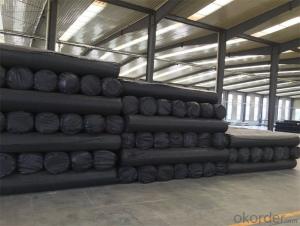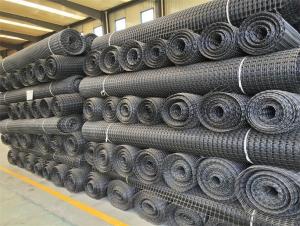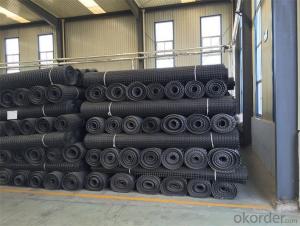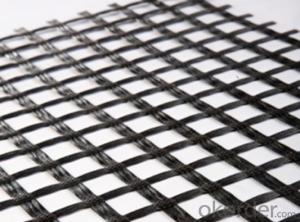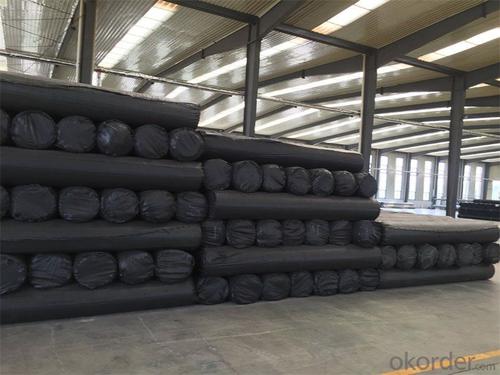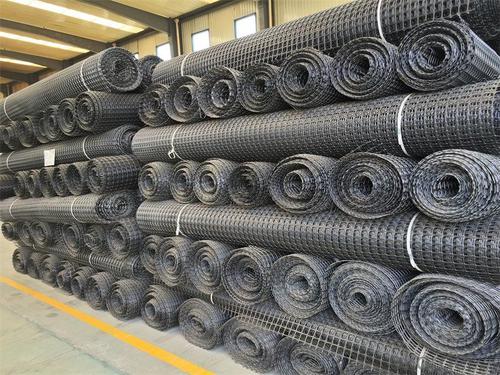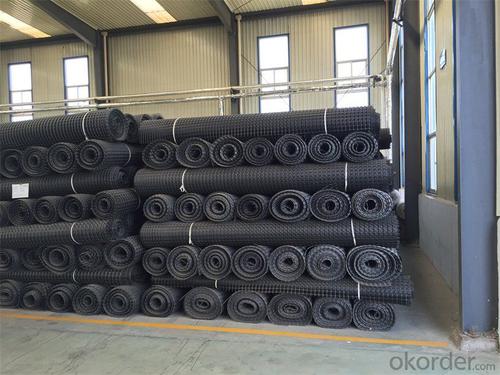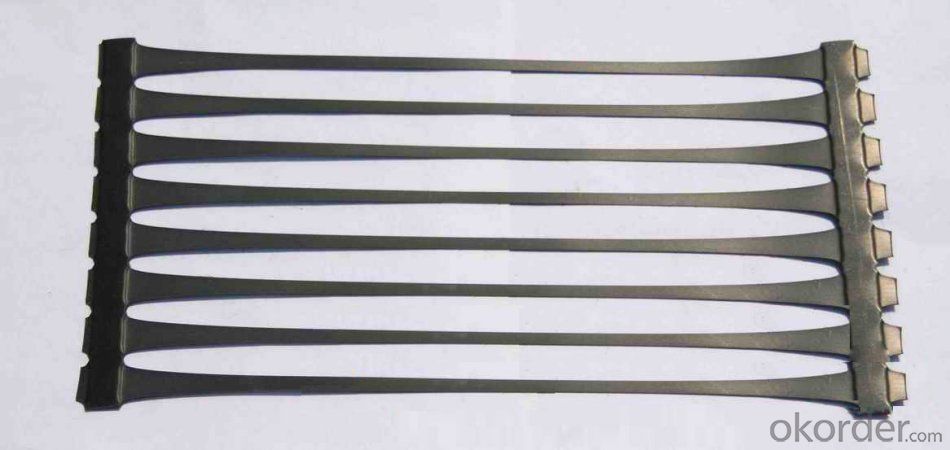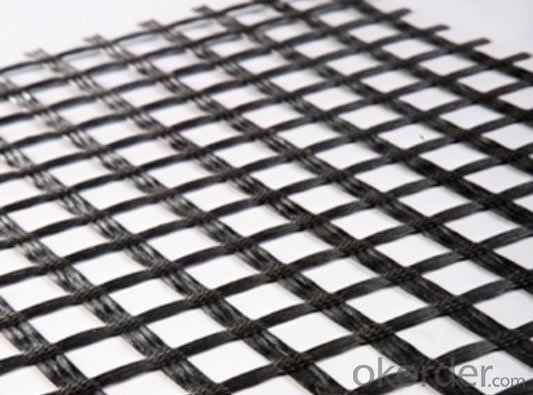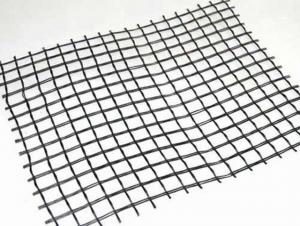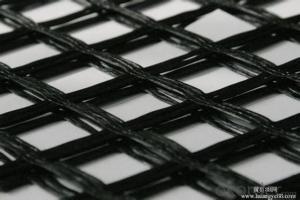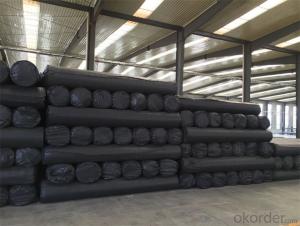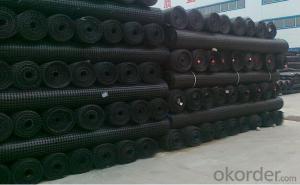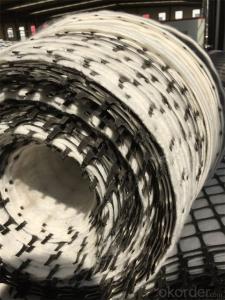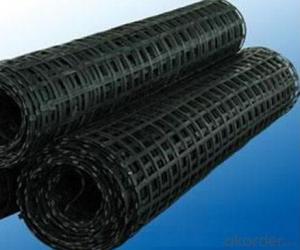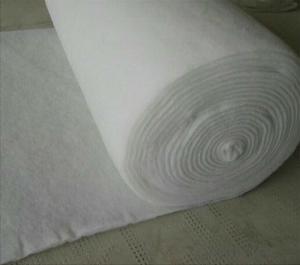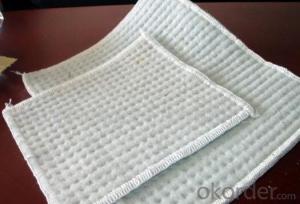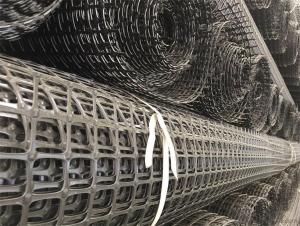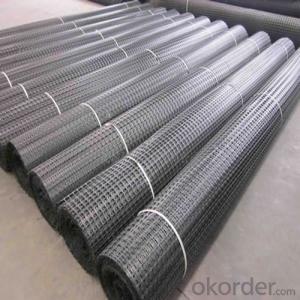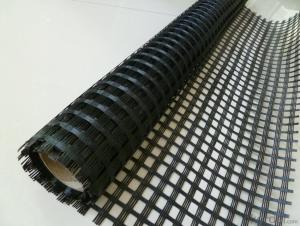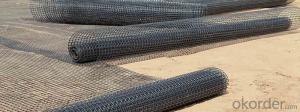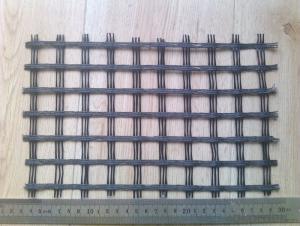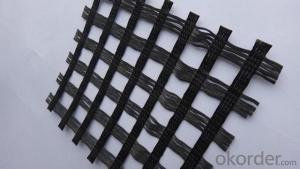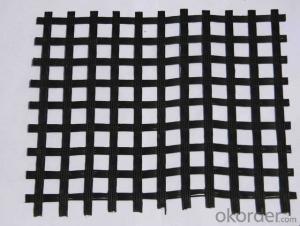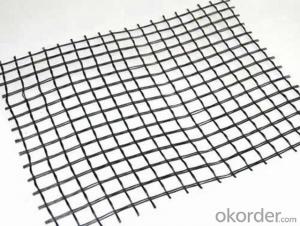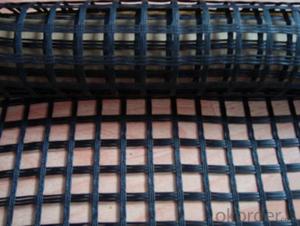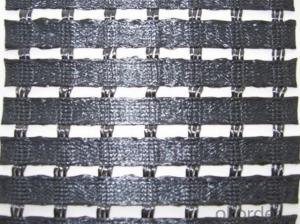Tenax Uniaxial Geogrids with Low Elongation and Good Toughness for Civil Engineering Construction
- Loading Port:
- China main port
- Payment Terms:
- TT OR LC
- Min Order Qty:
- 1000 m²
- Supply Capability:
- 10000000 m²/month
OKorder Service Pledge
OKorder Financial Service
You Might Also Like
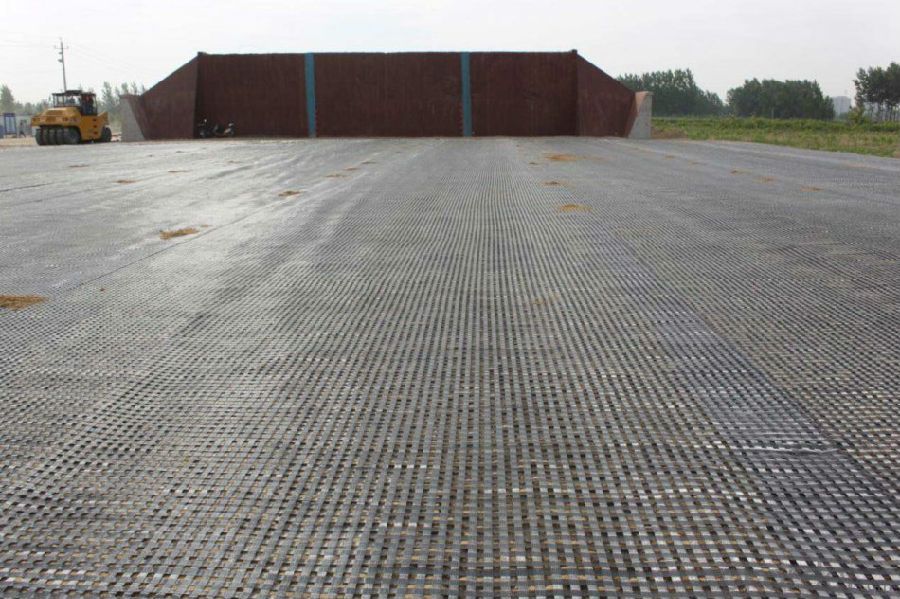
Introduction
Geogrid is widely used in civil construction over the whole world. It is manufactured on the basis of high-impact polyethylene and polypropylene. Geogrids are used as reinforcement materials on mellow soils for railway and car roads, parking places, landing grounds and for the reinforcement of bridge piers, slopes and earth banks, for erosion protection of slopes.
Material Major Advantages
Geogrid application is a way of soil reinforcement, On soil surface a plate is created according to the thickness of a corresponding geogrid: 50 mm, 100 mm, 150 mm, 200 mm (this standard range of products is manufactured by “Technostroytex” LLC).
Functioning principle: adhesion of grain material with grid meshes. This jamming causes resistance to horizontal soil displacement. Thus, it mobilizes bearing resistance of soft soils.
Our Service
Quality assurance
1.On a regular basis or as per your request,we entrust national testing agencies to conduct quality inspections
2. Strictly in accordance with the ISO9001-2008 international quality system standard,we monitor and manage the whole process throughout production,quality testing,and measurement to ensure product quality
3. For quality-related construction delay or substandard construction(except for damage or losses due to customer’s responsibility or irresistible natural disasters),we have refunding,replacement,and repair services.We will respond to customers’ feedbacks on quality issues within 24 hours.
Packaging & Shipping
Packing: PLASTIC FILM INSIDE, AND WOVEN BAG OUTSIDE
Shipping: About 15 days after receipt the deposit
FAQ:
Q: What kind of payments does jenor support?
A: T/T, L/C, Cash are accepted.
Q: Do you charge for the samples?
A: Accordeing to our company policy, the samples are free, we only charge the freight fee. And we will return the freight fee during the next order.
Q: Can you produce according to customers' design?
A: Sure, we are professional manufacturer, OEM and ODM are both welcome.
Q: Do you have other products?
A: Yes, please check the pictures:
- Q: What is the recommended depth of geogrid installation?
- The recommended depth of geogrid installation depends on various factors such as soil conditions, load requirements, and project specifications. However, a general guideline is to install geogrids at a depth of at least 12 inches below the surface to ensure sufficient reinforcement and stability.
- Q: Can geogrids be used in temporary retaining structures?
- Yes, geogrids can be used in temporary retaining structures. Geogrids are commonly used in retaining walls and slopes to provide reinforcement and stability. They help distribute the load, prevent soil erosion, and enhance the overall strength of the structure. Therefore, they can be an effective solution for temporary retaining structures as well.
- Q: How do geogrids enhance the stability of steep slopes?
- Geogrids enhance the stability of steep slopes by providing reinforcement and confinement to the soil. They are typically installed within the slope, creating a strong interlocking network that distributes loads and prevents soil movement. This reinforcement helps to increase the overall strength of the slope, reducing the risk of slope failure and improving stability.
- Q: Can geogrids be used in slope protection systems?
- Yes, geogrids can be used in slope protection systems. Geogrids are commonly used to reinforce slopes by providing stability and preventing soil erosion. They can be installed horizontally or vertically to improve the strength of the soil and enhance the overall performance of slope protection systems.
- Q: How do geogrids improve the performance of reinforced soil slopes in seismic areas?
- Geogrids improve the performance of reinforced soil slopes in seismic areas by providing enhanced stability and resistance against seismic forces. These geosynthetic materials act as a reinforcement, effectively distributing the loads and reducing the potential for slope failure during seismic events. Geogrids increase the strength and stiffness of the soil, minimizing the development of shear strains and displacements. This results in improved slope stability, reduced deformation, and better overall performance in seismic areas.
- Q: How do geogrids enhance the performance of geotextiles?
- Geogrids enhance the performance of geotextiles by providing additional reinforcement and stability to the soil. They work by interlocking with the soil particles and distributing the applied loads more evenly, which helps to prevent soil erosion, improve load-bearing capacity, and increase the overall strength and durability of the geotextile system.
- Q: How do geogrids improve the stability of mechanically stabilized earth walls?
- Geogrids improve the stability of mechanically stabilized earth walls by providing reinforcement and increasing the tensile strength of the soil. They act as a stabilizing element, distributing the forces and preventing the soil from shifting or sliding. Geogrids also improve the overall bearing capacity of the wall, allowing for the construction of taller and more stable structures.
- Q: How do geogrids improve the performance of reinforced slopes?
- Geogrids improve the performance of reinforced slopes by providing additional stability and strength to the soil structure. They act as a reinforcement material, increasing the tensile strength of the soil and preventing it from sliding or collapsing. The geogrids also distribute the applied loads more evenly, reducing the potential for deformation and settlement. Overall, geogrids enhance the slope's resistance to erosion, improve slope stability, and increase the longevity and durability of the reinforced structure.
- Q: How do geogrids improve the load distribution in pavements?
- Geogrids improve load distribution in pavements by providing a reinforcement layer that enhances the structural integrity of the pavement system. They distribute the load more evenly across the pavement surface, reducing stress and preventing the formation of cracks and deformations. Geogrids also enhance the overall strength and stability of the pavement, improving its lifespan and reducing maintenance costs.
- Q: How much is the geogrid 100KN
- Fiberglass grille price: 5 yuan
Send your message to us
Tenax Uniaxial Geogrids with Low Elongation and Good Toughness for Civil Engineering Construction
- Loading Port:
- China main port
- Payment Terms:
- TT OR LC
- Min Order Qty:
- 1000 m²
- Supply Capability:
- 10000000 m²/month
OKorder Service Pledge
OKorder Financial Service
Similar products
Hot products
Hot Searches
Related keywords
